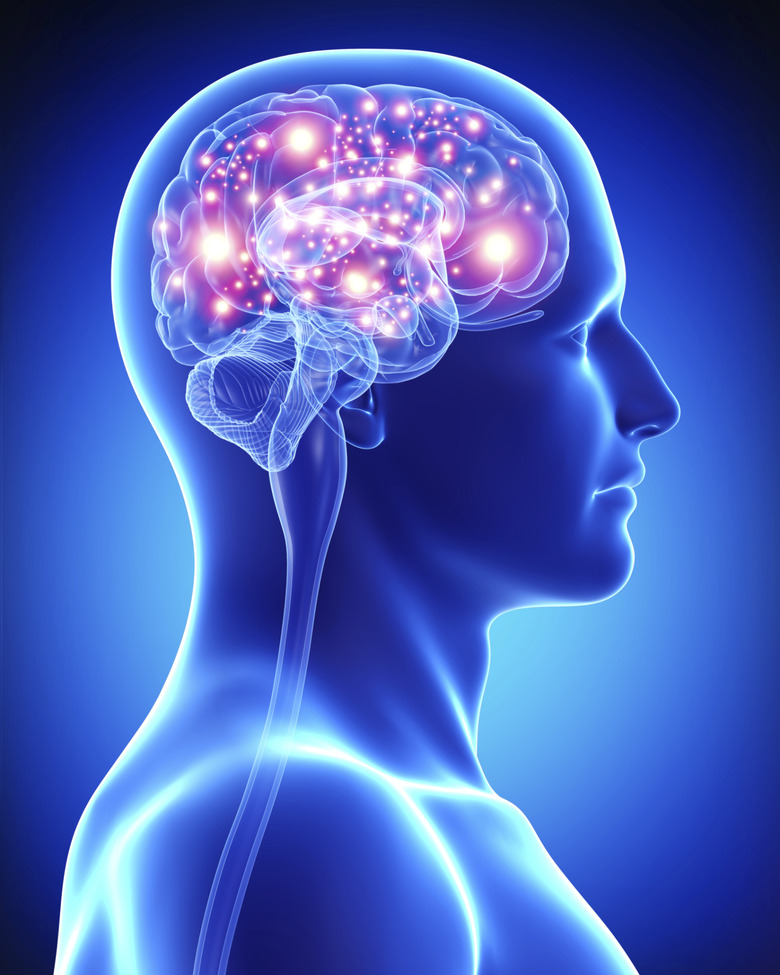Anatomy & Physiology Of A Synapse's Structure
The nervous system contains nerve cells, or neurons, that transmit signals to target cells, which can be neurons or other types of cells. The gap between the transmitting and receiving cells is called the synapse or the synaptic cleft. Stimulatory signals, either electrical or chemical, must cross the synapse to reach their target.
Both the sender and receiver cells have elaborate biochemical machinery to create, transmit, detect and react to signals that cross the synapse. Another type of synapse is found in the body's immunological system and involves white blood cells rather than neurons.
In this post, we're going to go over the synapse structure in neuronal and immunological synapses. This will also help you understand the synapse function in the body.
Neuronal Synapse Structure
Neuronal Synapse Structure
The synaptic cleft or gap junction is the space separating cell membranes of the presynaptic transmitter from postsynaptic receiver cells. The brain and central nervous system are composed of trillions of synapses that transmit information between cells. The cleft is so small—ranging from 2 to 40 nanometers—that imaging requires an electron microscope.
Chemical-signal synapse structure can be of two types: asymmetric or symmetric. The type will depend on the shape of the chemical-containing vesicles (small transportation sacs) that dump neurotransmitter chemicals across the gap that allow the synapse to function.
The vesicles of an asymmetric gap are round, and the postsynaptic membrane builds up dense material composed of proteins and receptors. Symmetric synapses have flattened vesicles, and the postsynaptic cell membrane doesn't contain a dense buildup of material.
Chemical Synapses
Chemical Synapses
A chemical synapse features a presynaptic neuron that converts electrochemical stimulation into the release of neurotransmitter chemicals that, depending on their composition, excite or inhibit the activity of the receptor cell.
The stimulated presynaptic cell accumulates calcium ions that attract certain proteins attached to vesicles containing neurotransmitter chemicals. This causes the vesicles to fuse with the presynaptic cell membrane, allowing the neurotransmitter chemicals to empty into the synaptic cleft.
Some of these chemicals meet and activate receptors on the postsynaptic cell membrane, which causes the signal to propagate through the postsynaptic cell. The neurotransmitters then release from the postsynaptic cell, sometimes with the help of special transporter proteins, and are reabsorbed by the presynaptic cell for reuse.
Thus, the synapse function is to propagate signals to the next cell.
Electrical Synapses
Electrical Synapses
The gap junction of an electrical synapse is about 10 times narrower than the width of a chemical synapse cleft. Channels called connexons bridge the gap junction, allowing ions to cross for synapse function.
The connexons contain proteins that can open or close the channel, thereby controlling the flow of ions. A stimulated presynaptic cell opens its connexons, allowing positively charged ions to flow into and depolarize the postsynaptic cell.
Electrical synapse physiology doesn't require chemical messengers or receptors and therefore allows faster transmission speeds. Another unique feature of the electrical synapse is that it permits signal transmission in either direction whereas chemical ones are unidirectional.
Immunological Synapse
Immunological Synapse
An immunological synapse is the space between different types of white blood cells, or lymphocytes. On one side of the synapse is either a T-cell or a natural killer cell. The postsynaptic cell can be one of several lymphocyte types that present foreign antigens on the surface.
The antigens cause the presynaptic cell to secrete proteins that help destroy the bacteria, virus, or other foreign substances ingested by the target cell. The synapse is also known as a supramolecular adhesion complex and consists of rings of different proteins. The presynaptic cell crawls over the target cell, establishes a synapse, and then releases proteins that respond to the invading foreign substance.
Cite This Article
MLA
Finance, Eric Bank, MBA, MS. "Anatomy & Physiology Of A Synapse's Structure" sciencing.com, https://www.sciencing.com/synapse-structure-anatomy-physiology-5534227/. 20 May 2019.
APA
Finance, Eric Bank, MBA, MS. (2019, May 20). Anatomy & Physiology Of A Synapse's Structure. sciencing.com. Retrieved from https://www.sciencing.com/synapse-structure-anatomy-physiology-5534227/
Chicago
Finance, Eric Bank, MBA, MS. Anatomy & Physiology Of A Synapse's Structure last modified August 30, 2022. https://www.sciencing.com/synapse-structure-anatomy-physiology-5534227/
